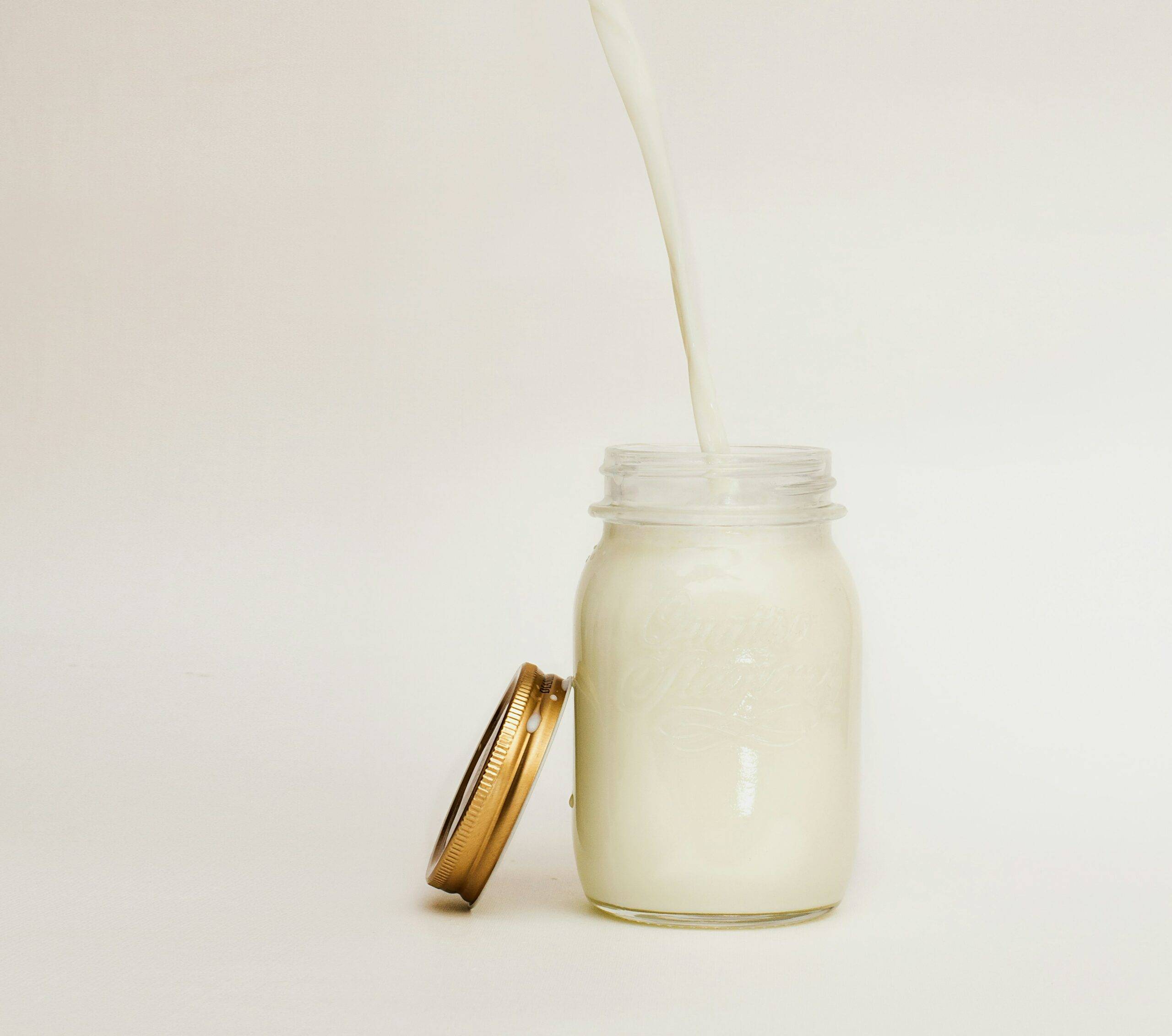Understanding Raw Milk
Before delving into the specifics of how and where to find raw milk, let’s first understand what raw milk is and the health concerns and benefits associated with it.
What is Raw Milk?
Raw milk is milk that has not undergone pasteurization, a process that kills harmful bacteria by heating the milk to a specific temperature for a set period of time (FDA). This process was first developed by Louis Pasteur in 1864 and is widely used today to destroy organisms responsible for diseases such as listeriosis, typhoid fever, tuberculosis, diphtheria, Q fever, and brucellosis.
Health Concerns and Benefits
While some individuals seek out raw milk for its perceived health benefits, it’s important to understand that raw milk can carry dangerous bacteria such as Salmonella, E. coli, Listeria, Campylobacter, and others that cause foodborne illnesses, often referred to as “food poisoning” (FDA).
The bacteria in raw milk can be especially dangerous to people with weakened immune systems, children, older adults, and pregnant women. Pregnant women who consume raw milk or foods made with raw milk, such as Mexican-style cheese like Queso Blanco or Queso Fresco, run a serious risk of becoming ill from the bacteria Listeria, which can cause miscarriage, illness, or death of the newborn baby (FDA).
Multiple organizations, including the federal Centers for Disease Control and Prevention (CDC), the Food and Drug Administration (FDA), the United States Department of Agriculture (USDA), the American Academy of Pediatrics, and other medical, veterinary, and scientific organizations, recommend consuming only pasteurized milk and milk products.
Despite these concerns, some individuals prefer raw milk due to its natural, untouched state, which they believe may offer certain health benefits. However, it’s crucial to understand the risks and take appropriate precautions when choosing to consume raw milk. If you’re still interested in finding raw milk sources, continue to the next section for details about the raw milk finder.
Laws Governing Raw Milk
When navigating the world of raw milk, understanding the laws that govern its sale and distribution is crucial. The laws vary at the federal and state levels and can affect your ability to purchase raw milk directly from a raw milk farm.
Federal Laws on Raw Milk
At the federal level, the US Food and Drug Administration (FDA) bans the interstate sale or distribution of raw milk. Specifically, Federal Regulation 21 CFR § 1240.61 states that no person shall cause to be delivered into interstate commerce or sell, distribute, or hold for sale any milk or milk product in final package form for direct human consumption unless it has been pasteurized.
Furthermore, all milk sold across state lines in the US must be pasteurized and meet the standards of the US Pasteurized Milk Ordinance. This regulation was implemented by the FDA in 1987, prohibiting the interstate sale of raw milk (FDA).
State Laws on Raw Milk
On the state level, laws governing the sale of raw milk vary greatly. Most states have statewide laws on raw milk sales, but a few leave decisions to local governments. As such, it’s important to understand your local laws if you’re considering purchasing raw milk.
For instance, some states allow the purchase of raw milk directly from farms, while others may require a cow-share agreement. Additionally, some states may allow raw milk sales in retail stores, while others only permit sales at farmers markets or on-farm sales.
Understanding these laws can help you plan your raw milk purchase, whether you’re looking to buy raw milk near you, find organic raw milk near you, or get raw milk delivery to your doorstep.
It’s important to note that the laws governing raw milk are subject to change, so it’s always a good idea to check with your local health department or agricultural extension office for the most current information.
Locating Raw Milk Sources
For those interested in exploring the world of raw milk, the first step is to locate a reliable source. Here, we will explore online raw milk finders and local farms and retailers where you can find raw milk.
Online Raw Milk Finder
Thanks to the internet, locating raw milk sources has become much more accessible. Websites like GetRawMilk.com offer a comprehensive global raw milk farm and retailer database. Currently, it lists 3719 raw milk sources in 49 countries worldwide. This makes it a convenient ‘raw milk finder’ for those seeking to purchase raw milk, wherever they may be.
To find raw milk sources near you, simply input your location into the search bar on the website. The result will be a list of raw milk farms and retailers in your vicinity. Remember to cross-check the validity of the sources and ensure they follow all state and federal laws regarding raw milk sales.
Local Farms and Retailers
Aside from online resources, local farms and specialty retailers often sell raw milk directly to consumers. For example, in Montreal, QC, places like Ferme Aux Vaches, La Ferme D’Alva, and Dans La Prairie offer raw milk. These places have received positive reviews for their raw milk quality and taste (Yelp). Some reviewers also mention that raw milk from these places is used to make other products like cheese and yogurt.
To locate local raw milk sources in your area, you can use search phrases like “raw milk near me” or “buy raw milk near me” on search engines or local business directories. Always remember to verify the credibility of the sources and ensure they adhere to health and safety standards.
Finding a reliable source of raw milk can take a bit of research, but the result is a unique product that you can enjoy in many ways. To learn more about raw milk, check out our other articles on where to buy raw milk and the various raw milk brands available.
Raw Milk in Different Regions
The availability of raw milk varies greatly, not just from country to country, but even within individual states in the US.
Raw Milk Access in US States
Strict regulations govern the sale and distribution of raw milk in the United States. The US Food and Drug Administration (FDA) bans the interstate sale or distribution of raw milk at the federal level (Source). All milk sold across state lines in the US must be pasteurized and meet the standards of the US Pasteurized Milk Ordinance.
Meanwhile, each state has the authority to regulate the sale and distribution of raw milk within its borders. Most states have state-wide laws on raw milk sales, but a few leave decisions to local governments.
Given the complexity of these laws, if you are looking to buy raw milk, it’s advisable to consult state and local governments for the most current and accurate laws on raw milk sales.
You can use our handy raw milk finder to locate a raw milk farm or retailer near you. Just remember to verify the quality of the milk and the farm’s permits before making a purchase.
Raw Milk Availability Internationally
Internationally, the availability of raw milk varies widely due to different legal frameworks and cultural attitudes towards raw milk. In some countries, raw milk is sold freely, while in others, it is strictly regulated or even banned.
Regardless of where you live, if you’re interested in purchasing raw milk, it’s important to understand the local regulations and safety precautions. Always purchase from reputable sources and ensure that the milk has been handled and stored properly to minimize health risks.
If you’re traveling and want to explore local raw milk options, you can still use our raw milk finder to locate sources of raw milk in your current location. Just remember to verify the quality of the milk and the farm’s permits before making a purchase.
Whether you’re in the US or abroad, remember that the consumption of raw milk comes with certain risks due to the lack of pasteurization. Always make informed decisions about your food sources and prioritize safety.
Safety Precautions for Raw Milk
When using a raw milk finder or looking to buy raw milk, it’s crucial to understand the safety precautions associated with raw milk consumption. Certain populations may face increased risks, and understanding the importance of pasteurization can help ensure safe consumption.
Risks for Specific Populations
While raw milk can have a unique flavor and texture that some find appealing, it also poses health risks, especially to specific populations. The elderly, immune-compromised people, children, and pregnant women are particularly susceptible to the hazards of raw milk consumption (FDA).
Since 1987, there have been 143 reported outbreaks of illness associated with the consumption of raw milk and raw milk products contaminated with harmful bacteria such as Listeria, Campylobacter, Salmonella, and E. coli. These outbreaks have led to miscarriages, still births, kidney failure, and even deaths (FDA).
Pregnant women who consume raw milk or foods made with raw milk, like Mexican-style cheese like Queso Blanco or Queso Fresco, run a serious risk of falling ill from Listeria bacteria, which can cause miscarriage, illness, or death of the newborn baby.
Importance of Pasteurization
The FDA strongly advocates for effective measures, such as pasteurization, to protect the safety of the food supply and maintain public confidence in milk as a healthy dietary staple.
All milk sold across state lines in the US must be pasteurized and meet the standards of the US Pasteurized Milk Ordinance. The US Federal Regulation 21 CFR § 1240.61 mandates that no person shall sell, distribute, or hold for sale any milk or milk product in final package form for direct human consumption unless the product has been pasteurized (ProCon.org).
Even raw milk made into other products, like soft cheese, ice cream, and yogurt, can still cause dangerous infections. The New York State Department of Health recommends consuming only milk and milk products that have been pasteurized (New York State Department of Health).
By understanding the risks and the importance of pasteurization, consumers can make informed decisions about consuming raw milk and raw milk products. Whether you’re a foodie seeking out organic raw milk from a raw milk farm or a cheese lover looking for raw milk brands, it’s essential to prioritize safety in your dairy adventures.
Ways to Verify Raw Milk Quality
When sourcing raw milk, it’s crucial to verify its quality to ensure it’s safe for consumption. While there are numerous benefits to drinking raw milk, it’s also important to be aware of potential health risks. Here are a few ways to verify the quality of raw milk.
Checking Farm Permits
In many states, dairy farms selling raw milk must hold a permit issued by the state’s Department of Agriculture. For instance, in New York State, raw milk may only be sold at dairy farms that hold a permit from the New York State Department of Agriculture and Markets.
Permitted farms are required to maintain proper sanitation, animal health, and packaging procedures. They must also undergo routine inspections, sampling, and testing. In addition, these farms must post signs that warn that raw milk does not provide the protection of pasteurization.
By checking for a farm’s permit, you can ensure that the raw milk you purchase complies with state regulations and is safe to consume. For more information on where to find these farms, check out our raw milk finder.
Identifying Healthy Dairy Farms
Another critical step in verifying raw milk quality is identifying healthy dairy farms. A healthy farm should have clean, well-maintained facilities and healthy, well-cared-for animals. The animals should be free from diseases and should not be given antibiotics or growth hormones.
The farm’s milk handling practices are also essential. The milk should be quickly cooled after milking, stored at the right temperature, and protected from contamination.
To find a reliable source for raw milk, visit our raw milk farm directory. Remember, it’s not just about finding raw milk near you, but about finding quality, healthy, and safe raw milk.
In conclusion, while sourcing raw milk, it’s crucial to check the farm’s permits and ensure that it maintains high standards of cleanliness and animal care. This will help ensure that you’re getting a quality product that is as safe as possible to consume. For more information on the benefits and risks of raw milk, check out our article on understanding raw milk.




Leave a Reply